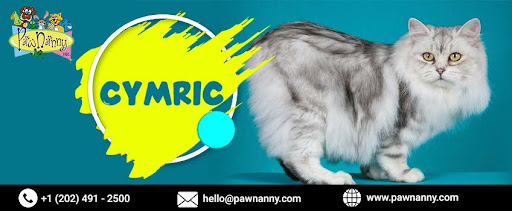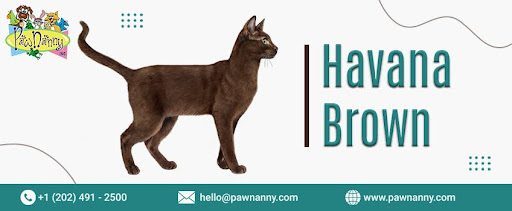
Cymric
Size: 8-14 inches
Weight: 8-13 pounds
Hypoallergenic: No
Lifespan: 12-16 years
Behavior
The Cymric cat breed, known for its distinctively fluffy appearance and lack of a tail, possesses several unique behavioral traits that make it a beloved companion. Firstly, Cymrics are renowned for their playful and affectionate nature. They are highly social cats that enjoy the company of their human family members and other pets. They often form strong bonds with their owners and love participating in daily activities. Whether following their owners around the house or curling up in their laps, Cymrics thrive on companionship and attention.
Despite their playful demeanor, Cymrics also have a calm and laid-back attitude. They are not as energetic or hyperactive as other cat breeds, preferring to lounge around and observe their surroundings. This makes them excellent indoor companions, well-suited to apartment living or households with limited space. Make sure to take your Cymric to regular Ear Cleaning services for pets.
Additionally, Cymrics are known for their intelligence and problem-solving skills. They enjoy interactive toys and puzzles that challenge their minds and keep them entertained. Their curious nature often leads them to explore every nook and cranny of their environment, and they are known for their agility and ability to climb to high places. Furthermore, Cymrics are generally good with children and other pets, making them an ideal family pet. They are patient and gentle, making them suitable companions for households with young children or other animals.
History
The history of the Cymric cat breed is as fascinating as its distinctive appearance. Originating from the Isle of Man in the Irish Sea, the Cymric's roots are deeply intertwined with those of its close relative, the Manx cat. The Manx cat is known for its unique feature of having a short tail or being entirely tailless, a trait believed to result from a natural genetic mutation. Like the Manx, the Cymric was likely brought to the Isle of Man by Viking settlers around a thousand years ago. These cats adapted to the island's environment and developed the characteristic taillessness that sets them apart. While the Manx has variable tail lengths, the Cymric is specifically bred for its taillessness.
The breed's name, "Cymric," is derived from the Welsh word for Wales, "Cymru," reflecting the strong Celtic influence in the region. Despite its name, the Cymric cat is not originally from Wales but shares cultural ties with the Celtic people. The Cymric cat has been valued as a skilled mouser and beloved companion throughout history. It gained popularity in the late 19th century, particularly in England, when cat fanciers noticed its unique appearance. The Cat Fanciers' Association (CFA) recognized the breed in the 1960s.
Today, the Cymric cat is cherished by cat enthusiasts worldwide for its charming personality, intelligence, and distinctive appearance. While still considered relatively rare compared to other breeds, the Cymric continues to captivate hearts with its playful antics and loyal companionship, carrying forward the legacy of its ancient origins on the Isle of Man.
Looks and Health
With its distinctive appearance and robust health, the Cymric cat breed captivates cat enthusiasts worldwide. Known for its long, flowing coat and charming round face, the Cymric possesses a unique allure that sets it apart from other feline breeds. The most striking feature of the Cymric cat is its luxurious, semi-long-haired coat, which is soft, silky, and dense. Their fur is particularly dense around the hindquarters, resembling a bunny's tail, a characteristic that distinguishes them from their close relative, the Manx cat. Cymrics can be found in various colors and patterns, including solid, tabby, calico, and tortoiseshell, each adding to their visual appeal.
In addition to their distinctive coat, Cymrics have a round, expressive face with large, round eyes that exude intelligence and curiosity. Their ears are medium-sized and slightly rounded at the tips, giving them an endearing teddy bear-like appearance. Cymrics also have a sturdy, muscular build with a broad chest and strong legs, giving them a well-balanced and agile physique. In terms of health, Cymric cats are generally robust and resilient. Their unique genetic makeup contributes to their overall vitality, although they may be prone to certain health issues, including spinal problems due to their tailless trait, as well as joint issues such as arthritis. Regular veterinary check-ups including Pets Ear Cleaning Services, proper nutrition, and adequate exercise can help maintain their health and well-being.
Food and Nutrition
The Cymric cat breed, known for its long, luxurious fur and playful demeanor, requires a balanced diet to maintain health and vitality. Proper nutrition is essential for promoting a strong immune system, maintaining a healthy weight, and ensuring overall well-being. When feeding a Cymric cat, providing a diet rich in high-quality protein is important. Protein is essential for supporting muscle development and providing energy. Look for cat foods that list a protein source, such as chicken, turkey, or fish, as the first ingredient.
Additionally, Cymric cats benefit from a diet that includes a moderate amount of fat. Fat is a concentrated energy source important for maintaining healthy skin and coat. However, it's crucial to avoid excessive fat intake to prevent obesity.
Cymric cats also require essential vitamins and minerals to support their overall health. Look for cat foods formulated to meet the nutritional needs of cats, including vitamins A, D, and E, as well as minerals like calcium and phosphorus. Furthermore, providing plenty of fresh water is essential for keeping a Cymric cat hydrated and aiding digestion. Ensure your cat has access to clean water, especially if you feed them dry cat food.
It's important to monitor your Cymric cat's weight and adjust their diet to prevent obesity or undernourishment. Regular veterinary check-ups can also help ensure your cat receives the proper nutrition and maintains a healthy weight. You can help your Cymric cat live a long, healthy, and happy life by providing a balanced diet that meets their nutritional needs.
Conclusion
The Cymric cat, a breed with a unique appearance and personality, originates from wild ancestors. In the wild, its ancestors likely roamed the rugged landscapes of the Isle of Man, where they adapted to their environment. Their long, thick fur and stocky build helped them withstand harsh weather conditions, while their agile nature made them skilled hunters. Cymric cats would have lived in small colonies in the wild, hunting for prey such as rodents and birds. Their long fur provided camouflage, helping them blend into their surroundings as they stalked their prey. With their playful and curious personalities, Cymric cats would have explored their territories, climbing trees and investigating their surroundings.
As pets, Cymric cats retain many of the traits of their wild ancestors. Their thick, plush fur requires regular grooming to prevent matting but also adds to their cuddly appearance. Cymrics are known for their friendly and affectionate nature, forming strong bonds with their human companions. They are often described as lap cats, enjoying cuddling up with their owners for warmth and affection. Despite their gentle demeanor, Cymric cats retain their hunting instincts, often engaging in playful activities such as chasing toys or stalking imaginary prey. Their intelligence and curiosity make them excellent problem-solvers, and they enjoy interactive toys and puzzles that challenge their minds. For more information or to avail ear cleaning services for pets in Fairfax, visit PawNanny.com.










